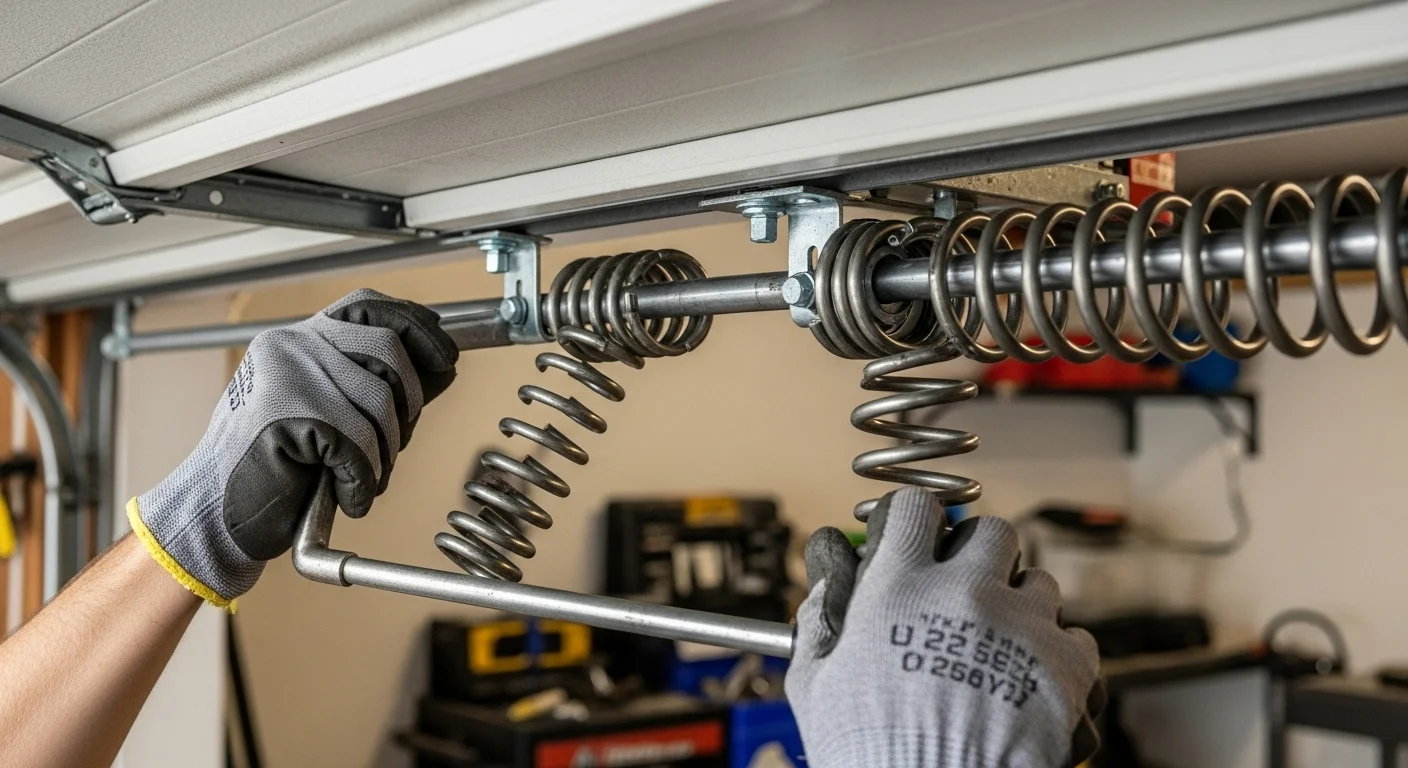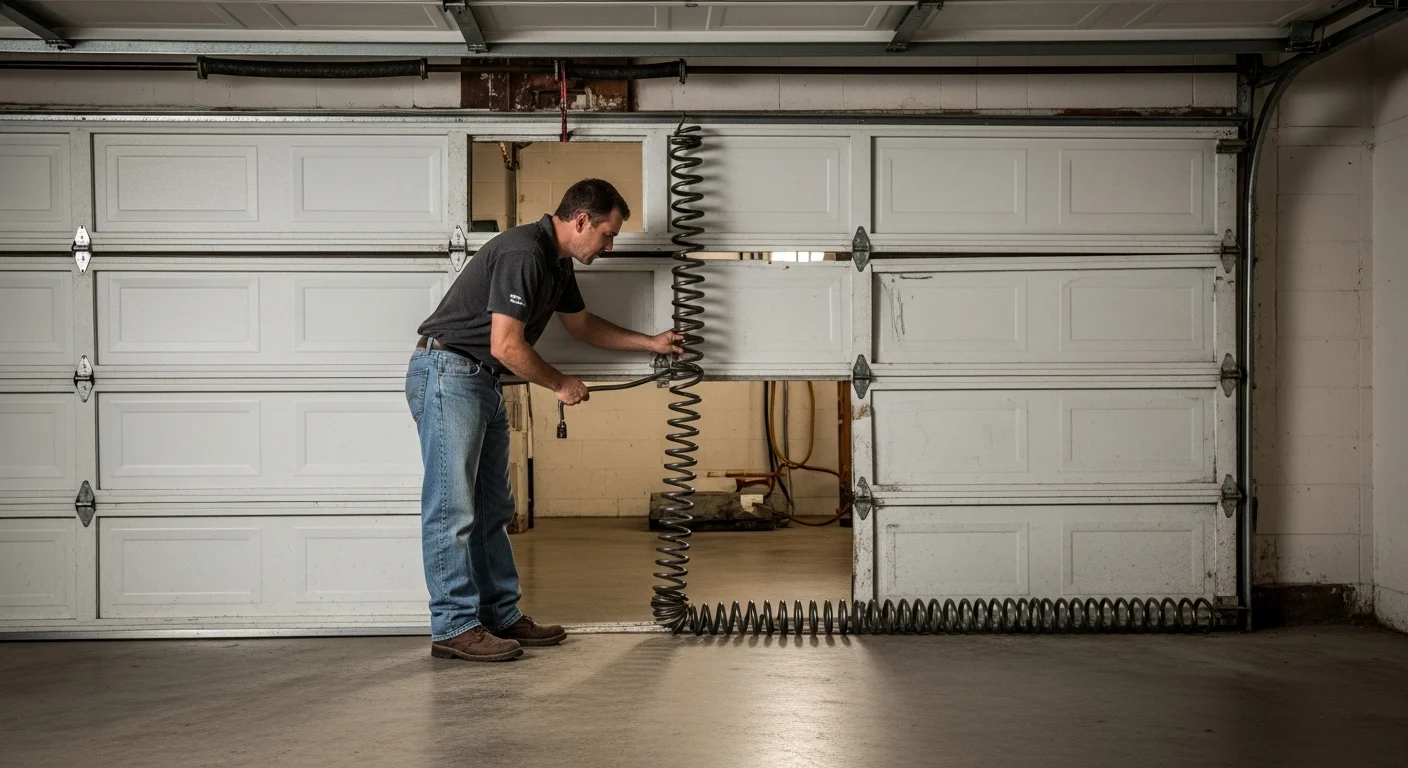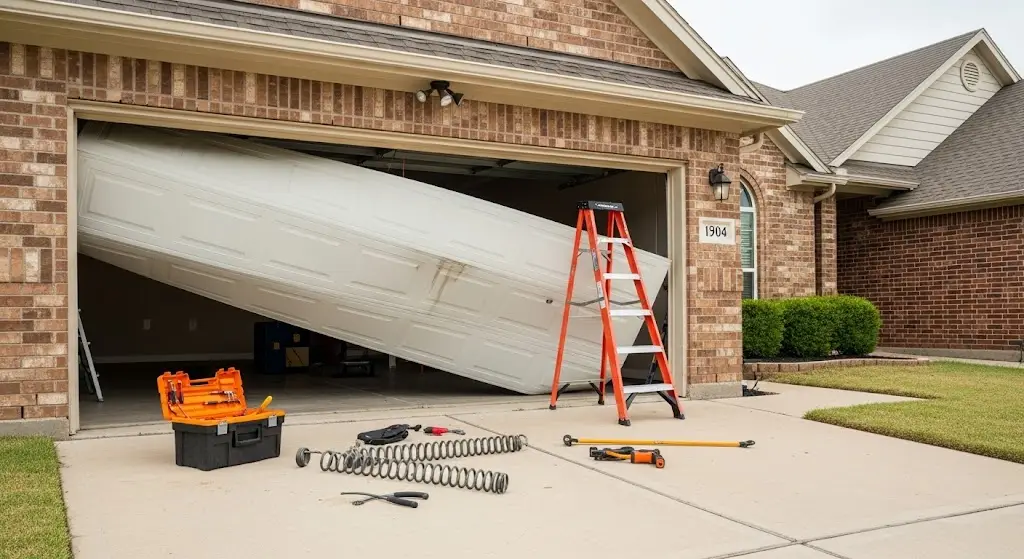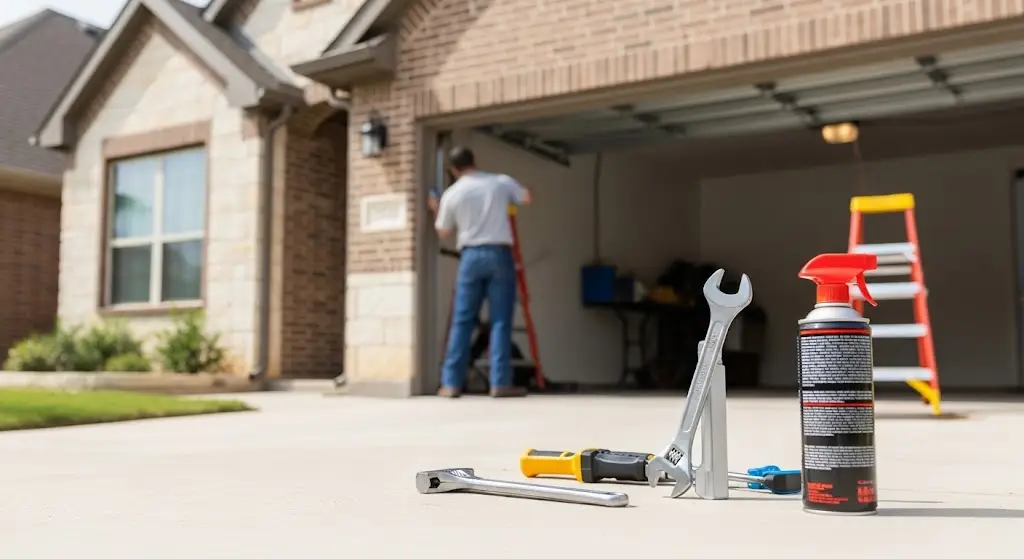When your garage door suddenly refuses to open or makes loud snapping noises, there’s a good chance a spring has broken. These springs bear the weight of the entire door often between 130 and 400 pounds making them one of the most vital yet dangerous components to handle.
In this guide, we’ll walk you through exactly what happens during a professional garage door spring replacement, step by step. You’ll learn how technicians safely diagnose, replace, and calibrate springs while ensuring long-term reliability and safety. By the end, you’ll know what to expect, what it costs, and when it’s time to call in the pros.
Understanding the Role of Garage Door Springs
Before we dive into how a professional replacement works, it’s important to understand what garage door springs actually do and why they fail over time. Every modern overhead garage door whether it’s residential or commercial relies on a carefully calibrated spring system that bears the entire weight of the door. Without these springs, the door’s opener motor would burn out almost instantly trying to lift several hundred pounds of steel or wood.
Most homeowners open and close their garage doors an average of 1,500–2,000 times per year, and each cycle stretches and compresses the springs, weakening their internal tension. Over the years, this metal fatigue causes the coils to lose elasticity and eventually snap, often without warning.
Understanding how these springs work helps you appreciate why professional repair is crucial not only for convenience but also for safety and door balance. A properly functioning spring system ensures smooth operation, prevents damage to your opener, and reduces the risk of accidents.
Types of Garage Door Springs and How They Work
Garage door springs serve as the mechanical counterbalance system that allows a 200-pound door to lift effortlessly with one hand—or with minimal motor effort.
There are two main types:
- Torsion Springs – Mounted above the door, twisting under tension to lift.
- Extension Springs – Installed on both sides, stretching and contracting during movement.
Each spring cycle (open/close) counts as one use, and most springs last 10,000–15,000 cycles—roughly 7–10 years of regular operation. To learn more about the types and differences between spring systems, check out How to Choose Garage Door Springs and Choose the Right Garage Door Springs for detailed guidance.
Signs You Need a Garage Door Spring Replacement
Before a garage door spring breaks completely, it usually gives several early warning signs that something is wrong. These signs are subtle at first a small delay in movement, a slight imbalance in weight, or an unusual noise—but they can quickly escalate into major safety hazards if ignored.
Garage door springs carry the full load of the door, balancing anywhere from 130 to 400 pounds of material weight. When they start to weaken, the door opener and cables compensate for the imbalance, putting excessive stress on other components. According to data from the International Door Association (IDA), nearly 7 out of 10 emergency service calls for garage doors are linked to failing springs that were left unrepaired for weeks.
Recognizing these symptoms early not only helps prevent costly damage but also keeps your family and property safe from potential accidents. Below are the most common indicators that your garage door springs may be nearing the end of their lifespan.
Common Warning Signs:
- Door feels unusually heavy when lifting manually.
- Uneven or jerky movement while opening or closing.
- Visible gaps in the coil of the spring.
- Loud banging or snapping sound during operation.
- Cables appear loose or detached.
- Door slams shut suddenly instead of closing smoothly.
- Opener strains or stops midway.
If you notice these issues, schedule a garage door repair in Wylie or your nearest service area to prevent further damage.
Step-by-Step Process of Professional Garage Door Spring Replacement
Replacing a garage door spring isn’t just about removing a broken coil and installing a new one it’s a precisely engineered mechanical process that requires safety awareness, technical skill, and calibration accuracy. Professional technicians follow a systematic approach designed to maintain door balance, structural alignment, and operator safety.
Every stage in the replacement process serves a specific purpose: inspecting for hidden damage, measuring the right spring dimensions, unwinding and re-tensioning under strict control, and testing for smooth operation afterward.
Safety Inspection and Diagnosis
The process starts with a comprehensive safety inspection.
Technicians:
- Disconnect the opener and lock the door in position.
- Examine both torsion and extension springs for visible wear.
- Inspect cables, bearings, and tracks for damage or rust.
- Measure spring tension using professional calibration tools.
For detailed procedures, visit Garage Door Spring Repair and Replacement in Dallas to understand how professionals handle safety inspection and diagnosis.
Measuring and Identifying the Spring Type
Accurate measurement ensures the correct replacement spring is installed.
| Measurement Type | Description | Purpose | Common Mistakes |
| Wire Diameter | Thickness of the coil wire | Determines strength and tension | Miscounting coils |
| Inside Diameter | Hollow core width | Ensures shaft fitment | Ordering wrong size |
| Length | End-to-end measurement | Affects door balance | Measuring while compressed |
| Wind Direction | Left-hand or right-hand | Defines installation side | Reversing spring ends |
Removing the Damaged Spring
Before a new spring can be installed, the old one must be safely removed and this is the most delicate, high-risk part of the entire process. Garage door springs store massive amounts of mechanical energy under tension; releasing that force without control can cause severe damage or injury.
Professional technicians use specialized tools such as winding bars, locking pliers, and torsion cones to gradually unwind and neutralize the stored torque.
Why Professional Replacement Matters
While replacing a garage door spring may look simple in online tutorials, the reality is far more complex and potentially dangerous. Each spring is a precisely calibrated mechanical component that carries hundreds of pounds of tension, and even a minor error in handling can cause severe injury or structural damage. That’s why professional replacement isn’t just a convenience it’s a critical safety investment.
Cost, Time, and Warranty Factors
Before investing in a replacement, most homeowners want to know the cost of a garage door spring replacement, how long it takes, and the warranty included. Learn more about actual pricing breakdowns and warranties in How Much a Garage Door Spring Replacement Costs for detailed estimates and comparisons.
Aftercare and Preventive Maintenance Tips
Once your new garage door springs have been installed, the work doesn’t stop there. Proper aftercare and preventive maintenance are essential for long-term performance. You can read more about maintenance practices and safety recommendations in Things You Need to Know About Garage Door Springs.
Conclusion
Replacing a garage door spring isn’t just about restoring movement it’s about restoring safety, reliability, and long-term performance. Core Garage Door understands how urgent and stressful a broken spring can be. That’s why our certified technicians follow a detailed, step-by-step process ensuring every repair meets the highest standards of precision, balance, and safety.
From accurate diagnostics to professional installation and final calibration, we guarantee a seamless experience that keeps your garage door running smoothly for years. Whether you need an emergency spring replacement, a full inspection, or preventive maintenance, Core Garage Door is your trusted local partner for fast, dependable, and affordable service.
📞 Need immediate help?
Contact Core Garage Door today for 24/7 garage door spring repair and replacement in Dallas and get your door operating safely again within hours.
Frequently Asked Questions (FAQs)
1. How long does garage door spring replacement take?
Usually 1–2 hours, depending on spring type and door condition. Professionals include testing and alignment for smooth operation.
2. Can I replace a garage door spring myself?
No, it’s unsafe due to high tension. Always hire a trained technician to avoid severe injury or property damage.
3. What’s the average cost of a professional spring replacement?
Between $250 and $450, including parts and labor. Complex double-spring setups may cost slightly more.
4. How long do garage door springs last?
Typically 7–10 years or 10,000–15,000 cycles, depending on daily use and maintenance habits.
5. What happens if a spring breaks suddenly?
The door may slam or jam mid-track. Stop using it and contact a professional immediately to prevent accidents.





